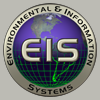
|
Scott Bachelor Principal Mechanical Engineer sbachelor@apl.washington.edu Phone 206-685-2125 |
Biosketch
Scott Bachelor is an experienced leader and innovator in technology and business with a demonstrated history of working in the maritime and aviation industries. His interests include transducer fabrication, multi-physics simulation, mechanical engineering design with an emphasis on additive manufacturing, and deep ocean sensor design.
Scott has led mechanical engineering projects in the aerospace industry, been a founder of a technology company, and a senior executive at Teledyne Technologies, Inc. He has led the efforts to merge research with production many times in his career and excels at bridging the divide between research and reality.
Scott has been strongly involved in multiple novel technology developments that include 4 patents.
Education
B.M.E, Auburn University, 1989
|
Publications |
2000-present and while at APL-UW |
An extensible software defined sonar for arbitrary phased array dimensionality Mower, J.M., J. Maier, T.M. Marston, C. Timme, S. Bachelor, S. Kahle, and D. Deitz, "An extensible software defined sonar for arbitrary phased array dimensionality," Proc., OCEANS 2025, 16-19 June, Brest, France, doi:10.1109/OCEANS58557.2025.11104514 (IEEE, 2025). |
More Info |
16 Jun 2025 |
|||||||
|
The University of Washington Applied Physics Laboratory has been developing next-generation software-defined sonar systems for a high level of modularity and adaptability. At the heart of this is mid- to high- frequency 64-channel unit that can be phase- and time-disciplined and combined to any number of channels. By combining modern advances in software-defined radio, ultrasound electronics miniaturization and cost reduction, modular timing, novel transducer construction, flexible interface, and real-time signal processing, we demonstrate an extremely flexible and capable sonar. At this time, we have successfully built and demonstrated 64, 128, 192, 256, and 640 element acoustic uniform linear phased arrays operating at greater than octave bandwidth. In addition, a modular 2D array is currently in development. These systems have been designed to support DC - 7 MHz acoustics; the base electronics can directly be integrated with an unmatched transducer, typically above 500 kHz where on-board drive voltage is suitable for piezoceramic transducers operating at high frequency. SWaP-C is significantly improved by the utilization of recent integrated circuits. For lower frequencies, an add-on higher-voltage driver and Transmit/Receive (TR) card is placed between the software defined sonar module and transducer. |
|||||||||






